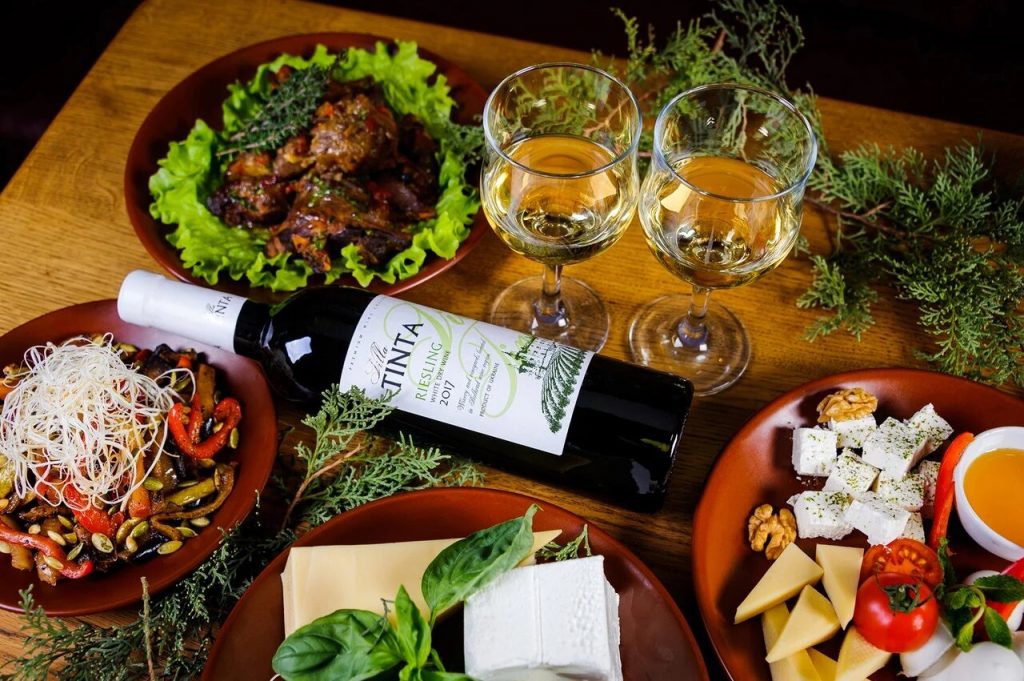Get your glasses ready: March 13 is International Riesling Day, and why not raise a glass to the occasion!
Created last year by the trade association Deutsches Weininstitut (DWI), also known as Wines of Germany, the day is an annual tribute to the noble grape variety, Riesling.
Date selection
The choice of date to celebrate the day of wine or other product is often arbitrary, but in this case it is not. It is based on the first written evidence of the existence of the Riesling grape variety: an invoice dated March 13, 1435. Found in a cellar beam in Rüsselsheim in the Rheingau district, the document sent to Count John IV Katzenelleboggen mentions six vines planted in the vineyard winery in the region. He presented the variety as Riesslingen – a common name at the time, which eventually transformed into the more familiar “Riesling” for us.
Origin
The fact that Riesling originates from Germany, namely from the Alsace region bordering France, is indisputable. It has a common ancestor with many European grape varieties, in particular with Chardonnay Chardonnay and Chenin Blanc. The wine quickly gained popularity among the German nobility, who kept it in large quantities and even took it with them on long-distance expeditions to conquer overseas territories. Through this massive stockpiling and wartime expansions, they discovered that Riesling stood out from other white wines in that it only benefited from aging. Unlike most whites, which must be consumed while they are still young, some Rieslings can be enjoyed decades later, provided of course they have been stored in the right conditions, thanks to the high acidity of these wines. Even today, in the German city of Bern, you can taste samples of Rieslings dating back to 1653!
Sort
Riesling has a solid reputation. Many describe it as the best white wine in the world. And not for nothing, because the Riesling variety is characterized by an amazing range of exquisite aromas of lemon, peach, pear and white flowers, while maintaining unobtrusive freshness and minerality!
Tasting notes: what to choose young or aged wine?
You will surely like the multi-layered fruit aroma and exquisite taste of Riesling. Even novices will find it very easy to recognize the aromatic profiles present in these wines: apricot, peach, apple and lemon blossom, because this variety is one of the most aromatic in the wine world.
The age of the Riesling will play a major role in its aromas and taste. Younger wines will have notes of lemon and pineapple. In addition, you may discover the aromas of honeycombs or ginger. But true connoisseurs are delighted by the petrol notes in the aromatic profile of aged Rieslings, and this very feature is one of the most desirable among winemakers and its fans.
After removing the bottle from the refrigerator, leave it for about 30 minutes at room temperature. Riesling should be slightly chilled, but not too cold. This is what makes it so popular in the warm season. When it comes to the Riesling tasting process, you don’t waste time noting for yourself the differences in color and viscosity that you may find among your samples.
Any tasting guide will insist on the need to fully enjoy the various aromas of this drink before taking the first sip.
Balance
Riesling is a favorite on hot summer evenings, thanks to its high acidity. In fact, few grape varieties retain as much acidity when ripening as Riesling. Thanks to this, we feel a pleasant freshness on the palate.
Riesling glass
Riesling is usually served in white wine glasses, although there is a lot of debate about the need for “Riesling glasses”. Some sources insist that a small, wide, large-mouthed glass is best suited to showcase the bold flavors of traditional German Riesling. Nevertheless, you can safely use a glass for white wines that comes to hand.
Gastronomic combinations
Like many white wines, Riesling pairs well with spicy foods. Its low serving temperature and bright aftertaste make it an ideal background for Thai, Indian or Chinese cuisine.
When serving Riesling with meat, prefer white meat, for example, chicken, turkey or seafood. A classic is the combination of Riesling with soft cheeses made from cow’s milk. Avoid cheeses with too sharp a taste, as they will overpower the delicate fruity aromas of Riesling. Instead, it pairs well with high-sugar vegetables like carrots or eggplant.
The summer heat is just around the corner and the next time you plan a dinner with friends, prepare a bottle of Riesling Villa Tinta 2019 and enjoy a pleasant summer evening with your guests.


